MONUMENTS

Christ of the Lanterns
It is a figure made in 1794 by the sculptor Juan Navarro León who has been the protagonist of verses, popular songs and even from a movie.
According to popular legend, Every night at twelve o'clock footsteps could be heard near the Plaza de los Capuchinos and a hooded man sneaked up on the Christ of the Lanterns. There he whispered a few words and mysteriously disappeared ... No one managed to see his face until one night the mysterious man revealed his secret to those who cared for the sculpture of Christ, before disappearing forever. It was about a soldier of the King who years ago was attacked by bandits and, when i was about to die, woke up disoriented in front of the Christ of the Lanterns. Since then, every night the man approached the sculpture at the same time he saved him to thank him.
Direction: Capuchin Square.
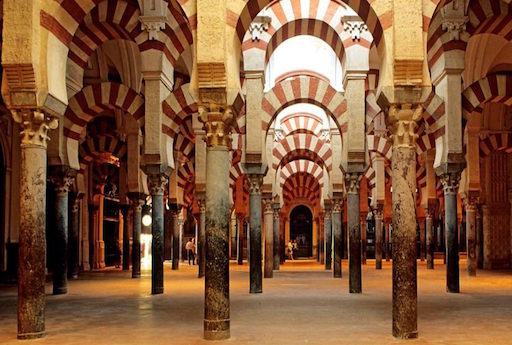
Mosque-Cathedral
The Mosque - Cathedral of Córdoba has been a World Heritage Site since 1984, and is considered the most important monument in the entire Islamic West. Its history perfectly sums up the evolution of the Umayyad style in Spain., to which are added the gothic, Renaissance and Baroque Christian construction.
Direction: Cardenal Herrero Street, 1, 14003 Córdoba
Schedule: check schedule and tickets HERE

Real Alcazar
The Alcazar of the Christian Monarchs, it is a palace and fortress with solid walls, and contains a large part of the architectural evolution of Córdoba inside. Roman and Visigoth remains with those of Arab origin in this majestic site, since it was the favorite place of the different rulers of the city.
Direction: Campo Santo of the Martyrs Square, s/n, 14004 Córdoba
Phone: 957 42 01 51

Medina Azahara
It was declared a World Heritage Site by UNESCO in 2018. It is a lavish and mysterious city that Abd-al Rahman III ordered to be built at the foot of the Sierra Morena and is located eight kilometers from the capital.
This solemn enclosure suffered great damage through the successive wars that ravaged al-Andalus at the beginning of the 11th century, transforming it into ruins. The effort to create an ideal city lasted only seventy years, ephemeral life for which it was “favorite” of the first caliph.
Direction: Ctra. Palma del Rio, km 5.5, 14005 Córdoba
Schedule: Tuesday to Saturday from 9.00 a 18.00 h, and Sundays of 9.00 a 15.00 h.
Phone: 957 10 36 37
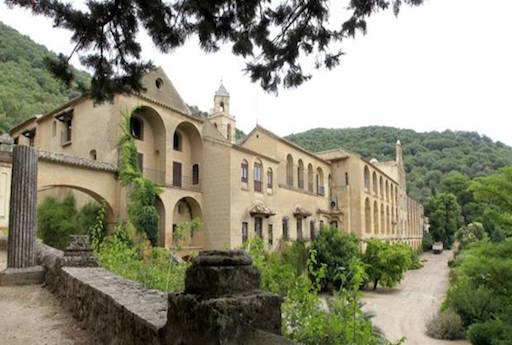
Monastery of San Jerónimo
In front of the impressive Medina Azahara, also sheltered by the Sierra de Córdoba and surrounded by native vegetation, there is the Monastery of San Jerónimo de Valparaíso, an imposing 15th century building. Its Gothic origin has been enriched thanks to the successive Renaissance and Baroque interventions.
Direction: Ctra. Palma del Rio, Km 5,5
Schedule: Monday to Saturday from 9.00 a 20.00 h.

Roman bridge
The whole of the cathedral mosque, the river, the bridge gate, and the same Roman bridge in Cordoba, make up one of the most exquisite views of the city, even more so if you visit at sunset, in that uncertain hour when the last rays of the sun gild the surfaces.
Direction: Of. from the Alcazar, s/n
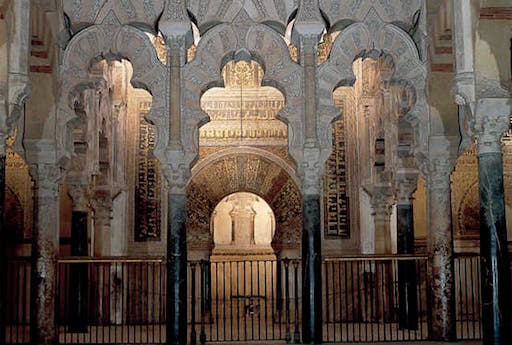
Synagogue
Unique in Andalusia and third of the best preserved from medieval times in all of Spain, The Córdoba Synagogue is located in the Jewish Quarter. Built between the years 1314 Y 1315 according to the inscriptions found on the building, served as a temple until the definitive Jewish expulsion. Through the patio there is access to a small hall.
Direction: Jews Street, 20
Phone: 957 01 53 34
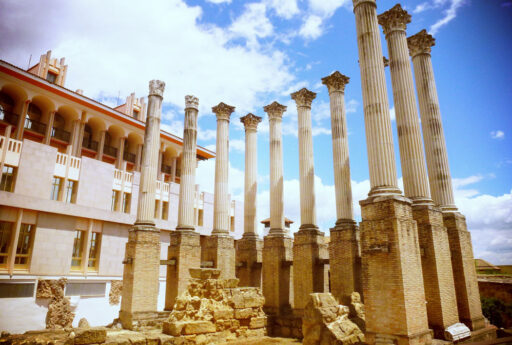
Roman temple
Next to the Town Hall, The only Roman Temple in Córdoba is located from which archaeological evidence has reached us. Dedicated to the imperial cult, amazes by its large dimensions. He was part of the Provincial Forum together with a circus. It was originally raised on a podium and had six free-standing Corinthian columns at its entrance.. In front of it stood the altar or altar.
Direction: Capitulares Street, 1
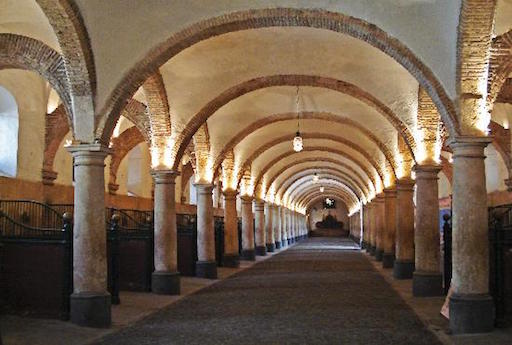
Royal Stables
In 1570, Felipe II gave free rein to his love for horses and his project to create the purebred Spanish. To do this, he ordered the construction of the Royal Stables of Córdoba in a part of the Alcázar site.. It shares with the royal fortress the marked military character.
Direction: Royal Stables Street, 1
Schedule: check schedule by phone *
Phone: 671 94 95 14

Chapel of San Bartolomé
Inserted in the Faculty of Philosophy and Letters, former hospital of Cardinal Salazar, there is the Chapel of San Bartolomé de Córdoba, exquisite sample of Mudejar architecture and anGgua parish of San Bartolomé. Made between the fourteenth and fifteenth centuries, in the baroque it was annexed to the hospital, being the most important reforms of the XIX. The main portal is covered with a triple arched portico.
Direction: Faculty of Philosophy and Letters, Averroes Street, S/N
Phone: 957 78 76 44

Roman Mausoleums
These impressive monuments date from the second quarter of the 1st century AD.. Rebuilt one of them completely and part of the second, The Roman Mausoleums of Córdoba are the most important Roman funerary constructions in the city.
Direction: Victory walk, 17
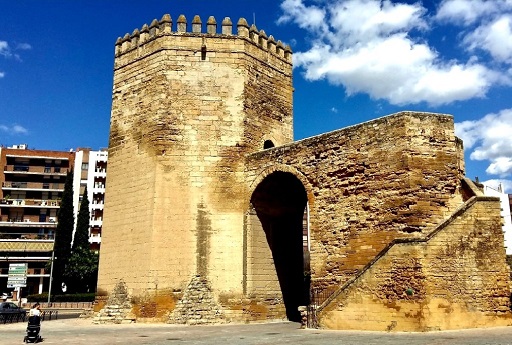
Malmuerta Tower
Near Plaza de Colón, the Malmuerta Tower of Córdoba, It is an albarrana tower that is wrapped in legend. Popular tradition assures that the name of the tower is due to the death of a noble Cordovan lady at the hands of her jealous husband.
Direction: Malmuerta Tower
Phone: 902 20 17 74
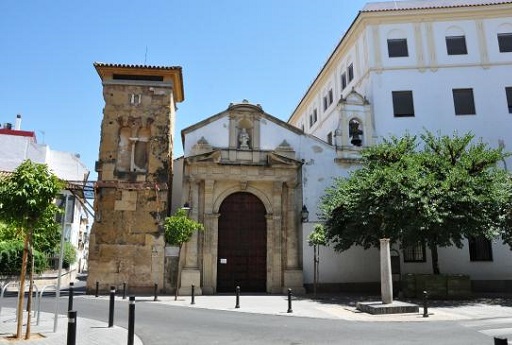
Minaret of San Juan
Its Arab appearance from the 10th century is preserved almost in its entirety, despite having been transferred after the reconquest, along with the mosque that housed it, for the construction of a church of the Order of San Juan. Square plan and ashlars, most called Gvo are the twin horseshoe arches with marble columns that decorate the tower. Currently the temple houses the order of the Slaves of Jesus.
Direction: San Juan Square, 4
Phone: 683 35 47 04
MUSEUMS
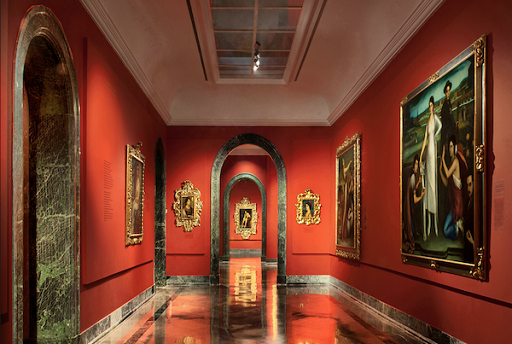
Julio Romero de Torres Museum
It is located in the same building as the Bellas Artes building in front of the Posada del Potro, was created in the year 1931, one year after the death of the painter Julio Romero de Torres. Dedicated to his work, allows us to take a tour of his life, from its beginnings to its most splendid and well-known works: La Chiquita Piconera, Oranges and Lemons, Cante Hondo, Poem to Córdoba, etc. The museum has been renovated three times, being the last of them in 2012.
Direction: Potro Square, 1
Schedule: check schedules by phone *
Phone: 957 47 03 56

Posada del Potro – Fosforito Flamenco Center
This building located in the square of the same name is the prototype of a popular dwelling from the 14th and 15th centuries. Colloquially called corrales, the rooms are arranged around a common patio dominated by a well. It is one of the Cordovan places preferred by Cervantes both in his life and in his work, Well, in addition to staying there, it served as a stage to develop some of his works. Today, Posada del Potro-Centro Flamenco Fosforito is a new space for interpretation, production, research and dissemination of flamenco.
Direction: Potro Square, 7
Phone: 957 47 68 29

Museum of Fine Arts
Located in the Plaza del Potro, opens its doors to the public in the year 1862, from the hands of its first director, Rafael Romero Barros placeholder image, father of the famous Cordoba painter Julio Romero de Torres. It occupies different dependencies of what was the old Hospital de la Caridad, plateresque style.
Direction: Potro Square, 1
Phone: 957 10 36 59
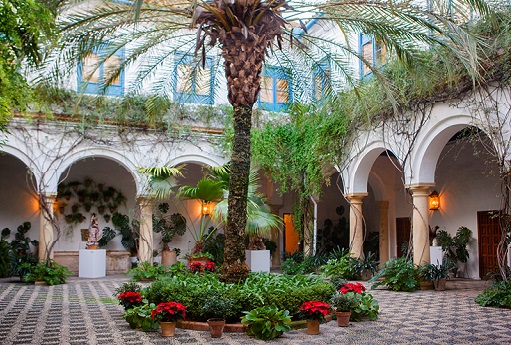
Viana Palace
In the Plaza de Don Gome stands this majestic palace, whose dependencies are developed around twelve magnificent patios and a fantastic garden. The different floral species decorate and perfume every corner of the bombastic museum. The last Marchioness of Viana, Sophia from Lancaster, knew how to maintain the exquisite origin of this 14th century palace.
Direction: Don Gome Square, 2
Schedule: Tuesday to Sunday from 9.00 a 15.00 h.
Phone: 957 49 67 41

Andalusí House
Next to the Synagogue, in the center of the Jewish quarter, we found a little jewel lit in time, the Andalusí House. It is located next to the old wall, Upon entering the front door we immerse ourselves in a typically Moorish atmosphere. In its different rooms and patios we will appreciate collections of old coins and a model of the first paper-making machines that arrived in the West..
Direction: Jews Street, 12
Schedule: Monday to Sunday from 10.00 a 19.30 h.
Phone: 957 29 06 42
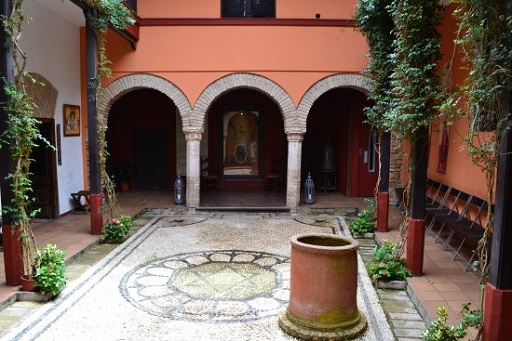
House of Sepharad
The House of Sepharad, also known as House of Memory, is a cultural center located in the heart of the Jewish quarter of Córdoba. Its permanent exhibition and its cultural activities aim to awaken interest in a hidden legacy and recover the memory of a tradition that is part of our identity.: Sephardic / Judeo-Spanish tradition. The permanent exhibition, Memories of the Sepharad, is divided into five themed rooms.
Direction: Jews Street, 14004 Córdoba
Schedule: Monday to Saturday from 11:00 a.m. to 6:00 p.m. and Sundays from 11:00 a.m. to 2:00 p.m..
Phone: 957 421 404
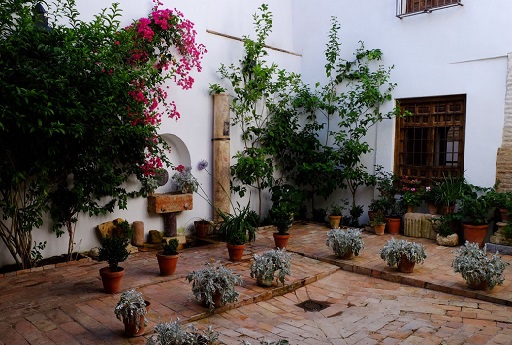
House of the Heads
The House of the Heads, with its four Patios de Leyenda and its very narrow alley of Muslim origin, called "of the Seven Infants of Lara" or "Calleja de los Arquillos", It is a beautiful sample of a Casa-Patio de Córdoba, that has its roots in the Middle Ages.
Direction: Cabezas Street, 18, 14003 Córdoba
Schedule: Check schedules and prices by phone *
Phone: 857 806 236
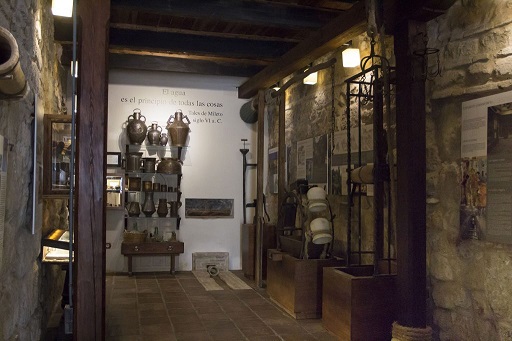
Water House
La Casa del Agua is an Interpretation Center that bases its thematic project on the representation of the natural and historical cycle of water in the city of Córdoba as a vital element, that serves as a common thread to understand the uses and customs of its inhabitants, its evolution over time and the difficulties in accessing its consumption.
Direction: Portillo Street, 6 14003, Córdoba
Schedule: Wednesday to Monday from 10:15 a 14:15 h.
Phone: 647 535 635

Botanical Garden
This center of plant culture was inaugurated in 1987. The different areas that make up the tour show us the different collections of the enclosure. The tour begins at the arboretum, that simulates a natural forest, going through the different greenhouses, agricultural school, the Rose Garden, its gardens and, of course, the Museum of Paleobotany. The Museum of Ethnbotany has a permanent exhibition in which the society / plant relationship is studied through different modules and instruments.. By last, the Hydraulic Museum.
Direction: Linnaeus Avenue, 14004, Córdoba
Check schedules and prices
Phone: 957 20 03 55
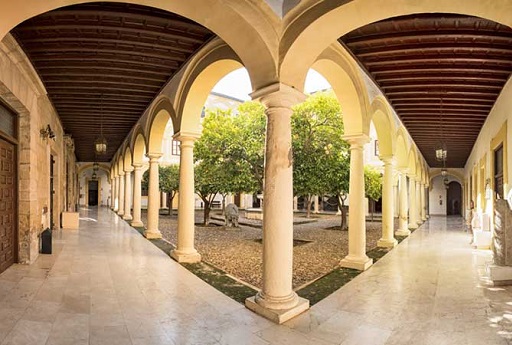
Diocesan Museum – Episcopal palace
On the second floor of the historic Episcopal Palace, in Torrijos street, the Diocesan museum is located, custodian a large collection of artistic pieces brought from churches throughout the Diocese, as well as the Cathedral and the Episcopal Palace.
Direction: Torrijos Street, 12, 14003, Córdoba
Phone: 957 496 474
ARAB BATHS

Baths of the Caliphal Alcazar
These remains were found western in 1903, in the Field of the Holy Martyrs, that months later they were buried.
These baths or hammam, contiguous to the missing Umayyad Alcazar, to which they surely belonged, they were possibly the most important in the city. The ablutions and corporal cleaning constituted an essential part in the life of the Muslim.
Direction: Baths of the Caliphal Alcazar, Campo Santo of the Martyrs Square, 14004, Córdoba
Schedule: Check schedules by phone *
Phone: 608 158 893

Arab Baths of Santa María
On Velázquez Bosco Street, very close to the Alhama Mosque, we found part of some Arab baths, possibly built during the Mudejar period on a 10th century lavatory related to the Great Mosque of Cordoba. Currently they are part of a house, being possible to visit them after acquiring the pertinent ticket.
Direction: Velázquez Bosco Street 8, 14003, Córdoba
DOORS AND WALLS
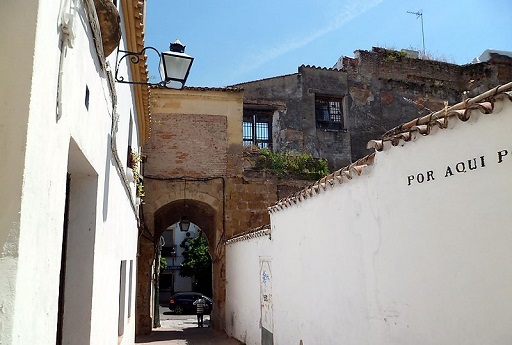
Arch of the Portillo
On the street of San Fernando, also known as the "Fair", we can visit the arch of the Portillo or Corvache, sparsely decorated and with a very simple structure. This horseshoe arch, opened in the 14th century, facilitated the transit from the old Medina to the walled Ajerquía.
Direction: San Fernando Street, Arch of the Portillo, 14003, Córdoba

Cairuán street wall
Down Cairuán street, accompanied by the pools and gutters with crystal clear water, part of the wall that enclosed the Medina runs. Located on the previous Roman, the current appearance is the result of the reconstructions of the last century. The peculiar name of the road is due to the twinning of the city of Córdoba with the Tunisian city of Kairouan, whose mosque shows similarities with the Cordovan one.
Direction: Cairuán street wall, Córdoba
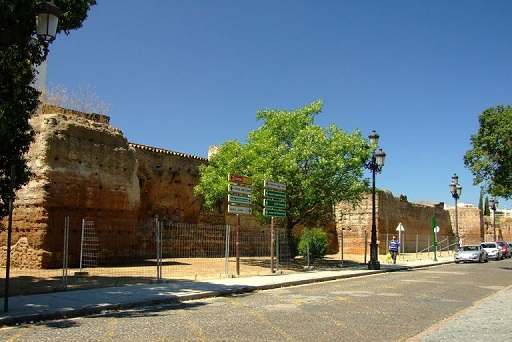
Marrubial wall
Behind the parish of Our Lady of Grace, in the round of the Marrubial, there is a canvas of Almoravid rampart dated between the 11th and 12th centuries. It has an approximate length of 400 meters and was part of the walled enclosure that surrounded the Ajerquía, Eastern area of the historic center of Cordoba.
Direction: Ronda del Marrubial, Marrubial wall 14007, Córdoba

Almodóvar gate
From Cairuán street, very close to the Alcázar de los Reyes Cristianos, you access the Puerta de Almodóvar, mostly 14th century Christian work. Although it was restored in 1802, the battlements and the walkway have been preserved almost intact. In front of it stands the sculpture of the Cordovan philosopher and playwright Seneca.
Direction: Almodóvar gate 14004, Córdoba

Seville gate
Through the Puerta de Sevilla you can access the popular neighborhood of San Basilio, famous for its beautiful gardens. It has been known by that name since the Middle Ages, for being the exit that most directly connected with Seville.
Direction: Puerta Sevilla Street, 14004 Córdoba
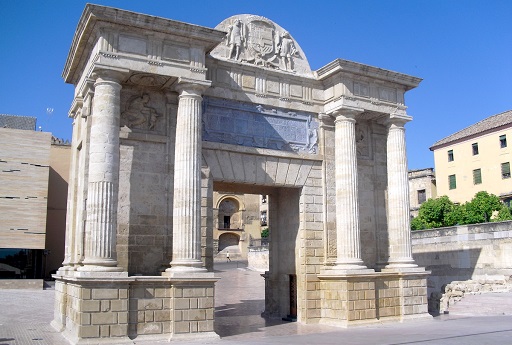
Bridge gate
It was originally known as a door in the reconquest under the name of Puerta de Algeciras, since it was the southern route of entry to Córdoba. At the beginning of the 20th century, it became independent from the constructions that flanked it and the land was lowered until it regained its original height.. Actually, the Puerta del Puente is a monument that can be visited. The public has access to a permanent Exhibition Hall that illustrates its history through a careful selection of texts and images and to the Viewpoint located at the top.
Direction: Triumph square, bridge gate 14003, Córdoba
STREETS AND SQUARES
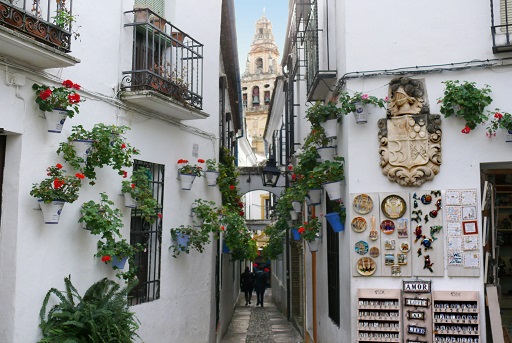
Calleja de las Flores
In the heart of the Jewish quarter, near the Mosque-Cathedral of Córdoba we find this peaceful alley, one of the most traditional in the city. Narrow and winding, go up a gentle slope to the small square where it ends. From the central fountain we can enjoy one of the most beautiful views of the tower of the Mosque-Cathedral.
Direction: Flower alley, 14003, Córdoba

The Jewish Quarter
Córdoba preserves a Jewish quarter located in the historic center, which is part of the area designated a World Heritage Site by UNESCO the year 1994. The neighborhood of La Judería has two central transversal streets and a labyrinth of small roads that end, sometimes, in typical dead ends or walkways. The limits of the current Jewish quarter go from the Puerta de Almodóvar to the Mosque-Cathedral.
Direction: The jewish, 14003, Córdoba
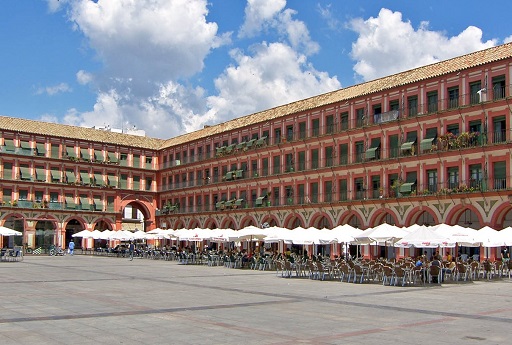
Corredera Square
The place where this square is located today is believed to have once occupied part of the Roman Circus. Archaeological interventions have rescued, From this epoch, some fabulous mosaics, exhibited in the Alcázar de los Reyes Cristianos.
Direction: Corredera Square 14002, Córdoba

Tendillas Square
It is considered the most central square in the city, and after its last remodeling, was inaugurated in 1999. The innovative design and successful lighting of the latter are mixed with respect for tradition, keeping, the equestrian statue of the Great Captain by the sculptor Mateo Inurria. On both sides and on the ground there are thirty-two jets of water that calm the summer heat and amuse the little ones.
Direction: Tendillas square 14003, Córdoba

Potro Square
Located in the Ajerquía neighborhood, It owes its name to the Renaissance fountain that presides over it, whose main decorative element is the figure of a foal. Traditionally it was a place for buying and selling livestock and handicraft activities., as the famous Inn of the same name shows. Today it houses the Fine Arts and Julio Romero de Torres museums on one of its sides..
Direction: Potro Square, Córdoba
HOUSES AND PALACES

Casa Carbonell
In the center of Córdoba, next to the conventual church of Santa Ana, the majestic Carbonell house is located, place of birth Ángel de Saavedra, Duke of Rivas, romantic writer. The beautiful access patio is closed with a gate with the date of 1881. The entrance to the building is covered with a modernist-style glass and iron canopy. It currently houses the headquarters of the municipal company VIMCORSA, with large rooms dedicated to temporary exhibitions.
Direction: Angel de Saavedra Street, Casa Carbonell, Córdoba

House of bells
Located on Siete Revueltas street, in the popular neighborhood of Santiago, there is what was the home of son Pedro de Montemayor, lord of Alcaudete, 15th century manor house. The once noble residence once housed a bell foundry, hence the name that has survived to this day. It currently hosts numerous artistic activities throughout the year.
Direction: Street seven revolts, 1, 14002, Córdoba

Mudejar House
Magnificent example of a medieval manor house with Mudejar influences. It was the first headquarters of the Archaeological Museum. It is located at the end of the street dedicated to the archaeologist Samuel de los Santos, and the main patio houses a central fountain and vegetation. After a laborious rehabilitation process, Casa Mudejar was reopened as the headquarters of Casa Árabe in September 2011.
Direction: Samuel de los Santos Gener street 9 14003, Córdoba
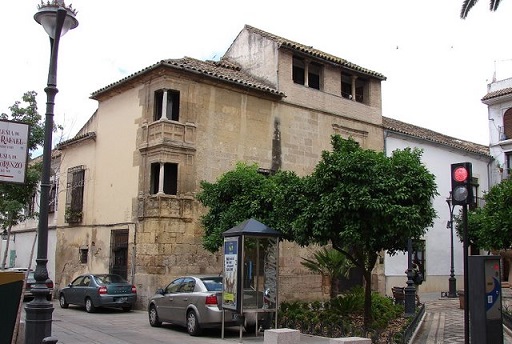
House of the Moon
The Casa de los Luna shows us one of the best examples of an Andalusian manor house in the Plateresque style. The palace stands out for its stone façade, which could be dated to the last third of the 16th century. Later it was increased in height with a double window floor as a loggia.
Direction: San Andrés Square, House of the Moon, 14002, Córdoba
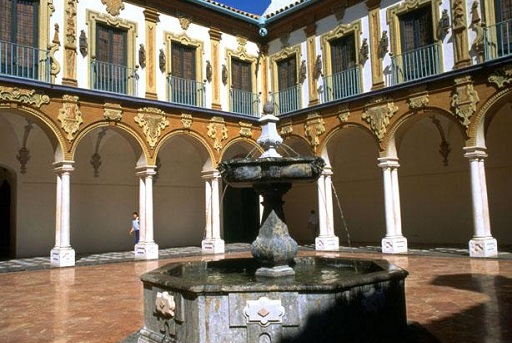
Merced Palace
Near the Plaza de Colón we find this old Mercedarian convent, current headquarters of the Diputación de Córdoba. It is a very unique building, representative example of Cordovan Baroque. Built in two phases during the 18th century, its dividing axis is a main church raised in 1745 with excellent plasterboards and the best baroque altarpiece in Córdoba.
Direction: Merced Palace, Provincial Council of Córdoba 14001, Córdoba
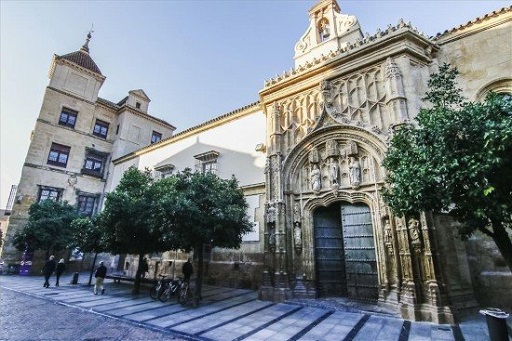
Congress Palace
Located on the ruins of the old Umayyad fortress we find the old Hospital of San Sebastián, current Palace of Congresses and Exhibitions, build, being, during two centuries, the only health center in the city. The main nucleus of the building is the Cloister, Mudejar architecture, and the Flamboyant Gothic Chapel.
Direction: Torrijos Street, 10 14003, Córdoba
Phone: 957 490 296

Palace of the Marquis of Benamejí
Located in the popular neighborhood of Santiago, This building is made up of a series of constructions from different eras and artistic periods. It was renovated in the year 1874 by Rafael de Luque. This manor house is the current headquarters of the School of Arts and Crafts.
Direction: Agustín Moreno Street, Palace of the Marquis of Benamejí 14002, Córdoba
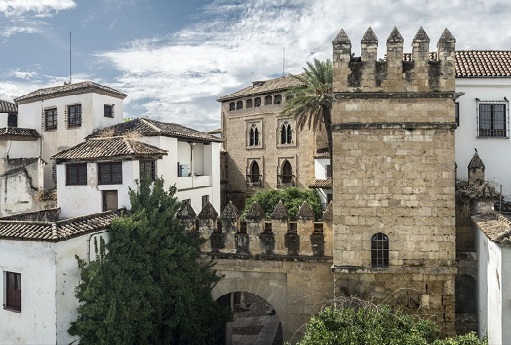
Palace of the Marquis of Carpio
On San Fernando street, very close to the arch of the Portillo, we can see part of the 15th century palace of the Méndez de Sotomayor family. Prototype of the great noble houses, The origin of this house dates back to the concession that Fernando III made to this family in order to defend and monitor the wall after the conquest of Córdoba in 1236.
Direction: Palace of the Marquis of Carpio, San Fernando Street 90, 14003, Córdoba
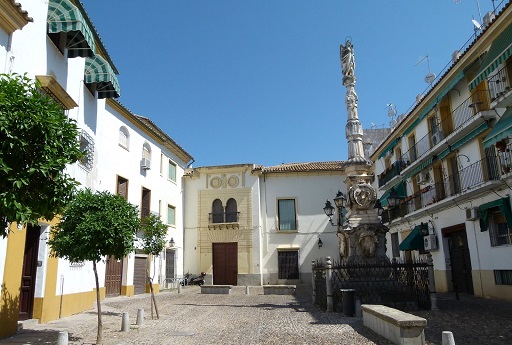
Palace of the Aguayos
In the small square of the same name, near the church of San Pedro, the aristocratic house of the Aguayo rises. This beautiful building, current headquarters of the College of the Sagrada Familia, popularly known as Las Francesas, It has a beautiful carved facade from the early 16th century.
Direction: Plaza de los Aguayos 14002, Córdoba
CHURCHES AND CONVENTS
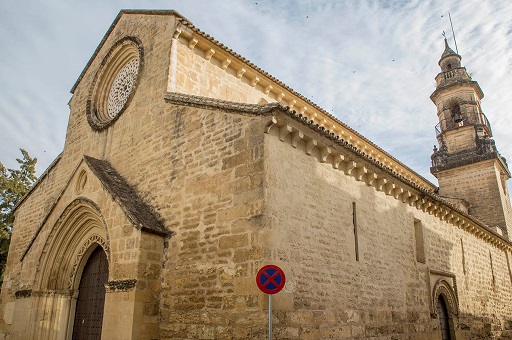
Magdalena Church
Located in the San Lorenzo neighborhood, the church of the Magdalena, one of the first to be built and a model for other parishes in Cordoba. Romanesque is mixed in his artistic style, Gothic and Mudejar.
Direction: Magdalena Church, 14002, Córdoba

Church of San Agustín
Located near San Lorenzo, the original construction of the church dates back to 1328 Y, like many of them, baroque interventions cover medieval work. San Agustín is one of Cordoba's baroque jewels.
Direction: Royal convent church of San Agustín, 14001, Córdoba

Church of San Andrés
Close to the church of San Pablo, in the Plaza de San Andrés, we can visit the church of the same name. Founded in the 13th century, it could be built on a Visigoth basilica, although the interventions of the seventeenth and thirteenth centuries masked any previous vestige. The tower preserves its lower part from the 16th century, being the superior of the following century.
Direction: San Pablo Street 31, 14002, Córdoba
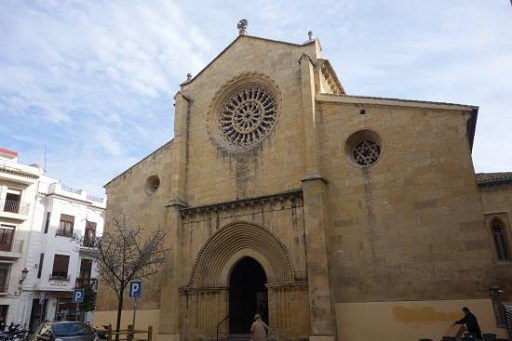
San Miguel's Church
Located in the city center, close to Cruz Conde street, the church of San Miguel is a medieval gothic construction with baroque renovations. On the cover, the beautiful rose window with intertwined columns draws attention.
Direction: Parish of San Miguel Arcángel, San Miguel square, 14002, Córdoba

Church of Santa Marina
In the Plaza del Conde de Priego is the parish of the neighborhood of the same name, the largest and most popular in Córdoba, and was founded by King Fernando III El Santo. Its construction began in the last decades of the thirteenth century and lasted during the fourteenth. Bring together the late Romanesque styles, Gothic and Mudejar.
Direction: Church of Santa Marina, Count of Priego square, 14001, Córdoba
Phone: 957 48 36 67

Convent of the Fathers of Grace
Located in the Plaza del Corazón de María, Plaza del Alpargate for parishioners, next to the arabic walls, we find this trinitarian convent in baroque style. It was enshrined in 1686 and today it is a convent, temple, college, and dining room for the homeless. The front of the church stands out, beginning of what will be the facades-altarpiece. The temple keeps the image of Our Father Jesus Rescued highly venerated among the people of Cordoba.
Direction: Plaza Cristo de Gracia, 5, 14002 Córdoba

Santa Cruz Convent
Located on Agustín Moreno street, near the Church of San Pedro, the extensive monastery of the Holy Cross is located, run by Poor Clare nuns. Founded in the 15th century, it preserves few vestiges of its Gothic origin due to subsequent remodeling, much of them in the baroque.
Direction: Convent of Santa Cruz, Agustín Moreno Street 14002, Córdoba

Convent of Santa Isabel de los Angeles
This convent was originally founded in the 15th century by Mrs. María de Villaseca, and opens with a 17th century façade, where you can see the coats of arms of the founding family. Church, rectangular floor plan with a single nave, it preserves interesting samples of Cordovan mannerism, as well as paintings and wood and stone carvings from the 17th and 18th centuries. The devotion among the people of Cordoba for the image of San Pancracio stands out, visited every Wednesday of the year for a job.
Direction: Convent of Santa Isabel de los Angeles, Santa Isabel Street, 14001, Córdoba

Convent of Corpus Christi
Near the popular square of Seneca we find this old baroque convent. Its cloisters and corridors are visited today by students, future artistic promises of painting, sculpture and letters. Outstanding are, of the whole set, the exhibition hall and the extraordinary entrance.
SCULPTURE SETS
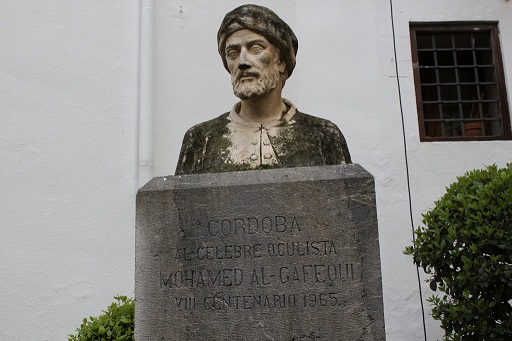
Al-Gafiqi
In the Plaza del Cardenal Salazar, in front of the Faculty of Philosophy and Letters, is the monument to this 12th century Arab doctor born in Gafiq (Belalcázar). He studied medicine based on the work of prestigious Arab doctors and the work of Hippocrates. He is the author of the famous manuscript Guía del Oculista, written in arabic, of which a copy is kept in the library of El Escorial, constituting a magnificent historical document, scientific and literary.
Direction: Cardinal Salazar Square, Córdoba

Alhakem II
Alhakem was the son of the first caliph of the Muslim West and was born at the time of maximum splendor in Cordoba. In the year 961 occupies the throne and from that moment, Christian offensives, the eradication of alcohol and the search for an heir occupied his life. His interest in the cult of the mind was such that he opened more than twenty schools for poor children in the city.. Its extension of the Mosque is one of the most beautiful European constructions since, like his father, did not skimp on materials for its construction.
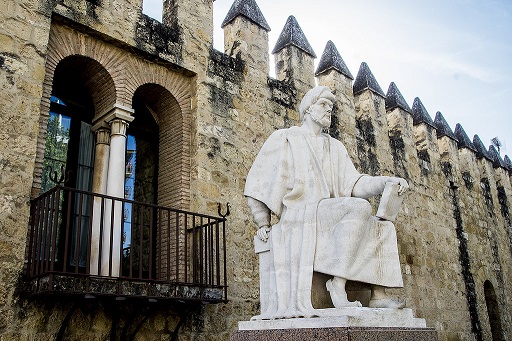
Averroes
Abu-l -Walid Muhammad Ibn Ahmad Ibn Rushd, was the philosopher, most experienced Arab astronomer and writer of his time, becoming a figure of great weight in the history of Arab-Islamic thought. Follower of Aristotelian philosophy, his works were directed to reconcile the position of the Greek philosopher with the Muslim faith and he highlights his "Comments to Aristotle", writings of great impact on later philosophy.
Direction: Cairuan Street, Córdoba
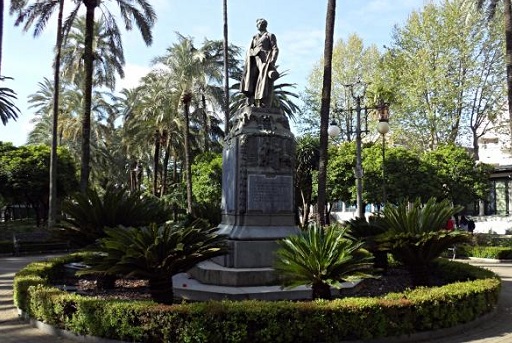
Duke of Rivas
In the gardens that bear his name, next to the Paseo de la Victoria, is the monument to this Cordoba, Angel of Saavedra. From early on he made his political position clear fighting against the French invaders and forming part of the Cortes of Cádiz. In 1834 inherits the title from his deceased brother, becoming Duke of Rivas and giving a conservative turn to his political career. With the arrival of the Regency of María Cristina, he was appointed president of the Council of Ministers.
Direction: Gardens of the Duke of Rivas, Córdoba
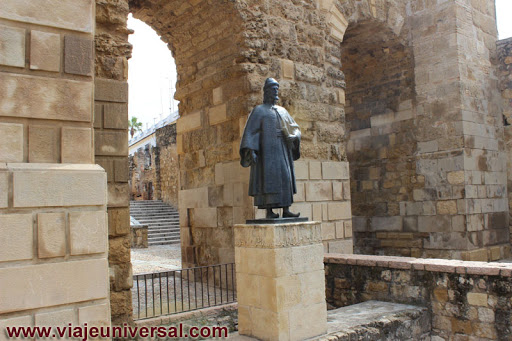
Ibn Hazzam
His statue is raised in the Puerta de Sevilla, one of the most monumental entrances to the Historic Quarter, a World Heritage Site. He maintained a prolific literary activity, with more than four hundred works, varying the theme between politics, theological, historical or literary. Definitely, his most significant work is El collar de la Paloma, since it will influence medieval love productions giving rise to the theme known as courtly love.
Direction: Seville gate, 14004, Córdoba
FOUNTAINS AND GARDENS

Fountain of the Plaza de las Dueñas
Located next to the Cistercian convent, in the Plaza de las Dueñas, this monumental Italian white marble fountain was built, work from the second half of the 20th century. Its crystalline water tends to playfully jump into the two marble cups and refresh the atmosphere of the triangular square..
Direction: Rey Heredia Street, 10, 14003 Córdoba
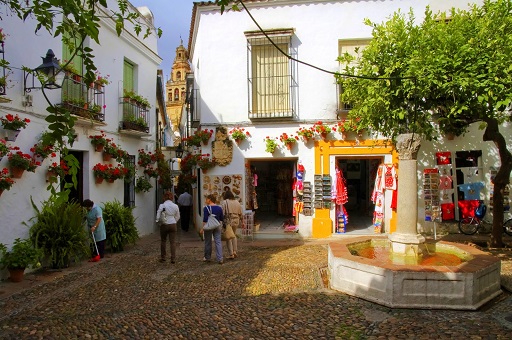
Fountain of the Plaza de las Flores
Calle de las Flores is one of the most visited in Córdoba. From the small square where this street ends, you get a magnificent view of the Cathedral tower.
Direction: Flower Square, 14003, Córdoba

Fountain of the Plaza de San Andrés
Near the Church of San Andrés the small square of the same name opens, place centered by this beautiful baroque fountain. According to the data found, it was carried out in 1664 for the Plaza del Salvador, moving two centuries later to its current location. Until 1813 was crowned by the coat of arms of the French empire, the Eagle, which was destroyed by erasing the memory of Napoleon Bonaparte.
Direction: San Andrés Square 14002, Córdoba
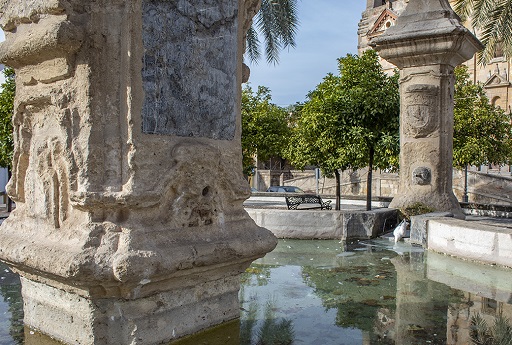
Fountain of the Plaza del Cristo de Gracia
In front of the church of the Fathers of Grace, in the square known as El Alpargate, rises this phenomenal fountain of baroque manufacture and uncertain influence, maybe Inca. Its original location was in Puerta Nueva and, according to popular legend, the expenses were covered with the profits of three bullfights.
Direction: Plaza del Cristo de Gracia, Córdoba
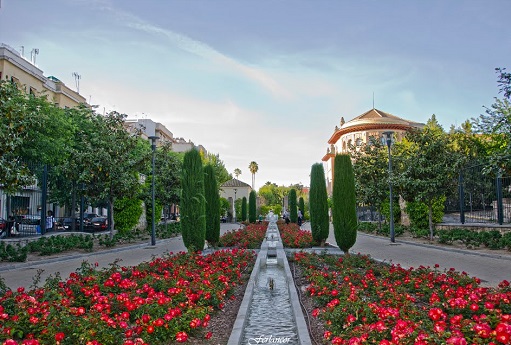
Gardens of Juan Carlos I
In front of the current University Rectorate is located one of the most emblematic parks of the city. Of recent trace, the careful organization of the garden and play areas, as well as the installation of a beautiful pond crossed by a small bridge, make this garden one of the favorites for children and adults. During the summer it hosts poetic festivals.
Direction: Juan Carlos I Park, 14004, Córdoba

Gardens of Agriculture
Its name is due to the orchards that flooded this enclosure when the local council bought it in 1866 and is currently known as "Garden of the Ducks", due to their large number. It is home to a great variety of species and highlights the majestic ginkgo (Mesozoic surviving species). Preserves several monuments, such as those dedicated to Julio Romero de Torres or the composer Martínez Rucker.
Direction: Gardens of Agriculture, 14001, Córdoba
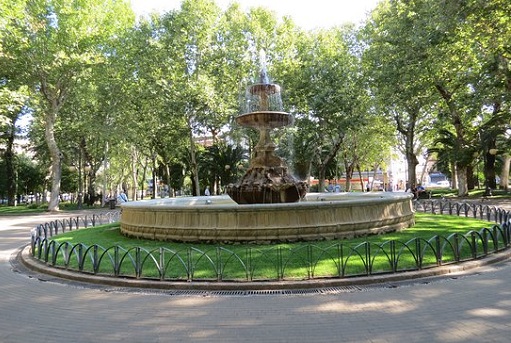
Gardens of La Merced
Also known for Jardines de Colón, they always had their reference in the old convent of Mercedarian friars. This enclave was one of the natural exits of the city to the north. The gardens are embellished with a fountain in their center designed at the end of the 19th century, all surrounded by rose bushes, hedges, and a large number of tree plantations.
Direction: Gardens of La Merced, Córdoba
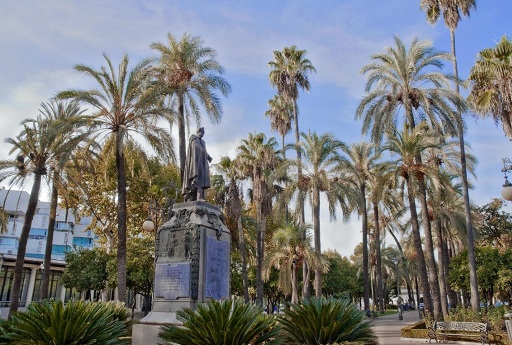
Victoria Gardens
They are part of Paseo de la Victoria, a wide avenue that took its name from a former convent that disappeared in the 19th century. It was the stage where the fair of Our Lady of Health took place, that is celebrated at the end of the month of May and that was transferred to the Arenal enclosure. The gardens were spruced up with new plantings, whose northern part is dedicated to the Duke of Rivas, Cordovan writer and politician.
OTHER TOURIST POINTS OF INTEREST
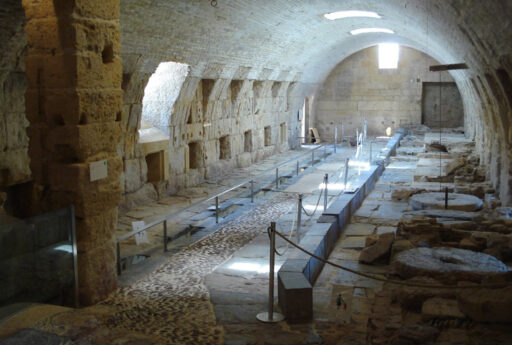
Hydraulic Museum – Martos Mill
The Hydraulic Museum integrates the interpretation of history through culture in the Molino de Martos, water management and tradition in the use of plants: food source (cereal flours), dyes (cloths and fabrics), shortening (furs) or vegetable fibers.
Direction: Molino de Martos Museum, 14002, Córdoba

Albolafia Mill
It was ordered to be built by Abd al-Rahman II to raise the water from the river to the palace of the emirs through an ingenious aqueduct. The mill has a restored Ferris wheel, which was originally ordered to dismount by Queen Isabel La Católica due to the noise it produced in its proximity to the Alcázar, the royal residence. This mill has been part of the city's coat of arms since the 14th century.
Direction: Alcazar Avenue, 512, 14003, Córdoba
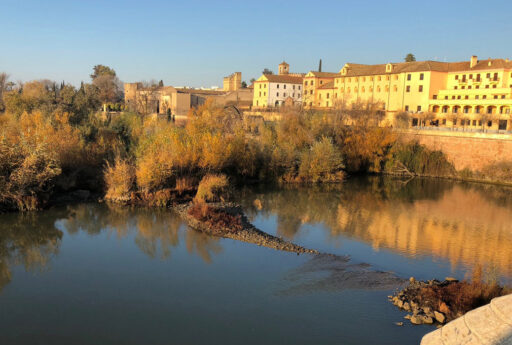
Sotos de la Albolafia
Only six kilometers make up the so-called Sotos de la Albolafia. The drag material that the river deposits in this section has configured a most peculiar landscape, where a great variety of birds and plants have found their perfect place. In 2001, was declared a Natural Monument, creating, in the middle of the city, a true reserve of flora and fauna.
Direction: Of. Fray Albino, 1, 14009 Córdoba

Triumphs of San Rafael
All over town, there is a series of commemorative monuments dedicated to the Archangel Saint Raphael. The "triumphs", Well, that's how they have come to be called, constitute a fervent representation of popular devotion. In years of great hardship or epidemics, the people of Córdoba entrusted themselves to their Holy Custodian, erecting triumphs everywhere
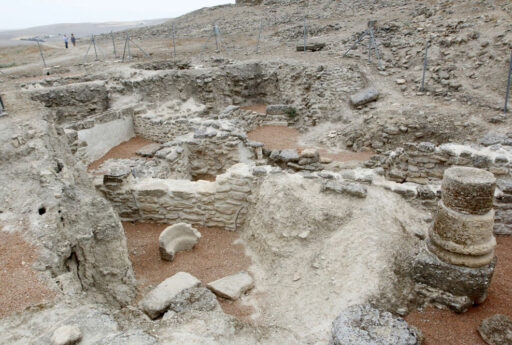
Ategua
Ategua is an archaeological site located in the municipality of Córdoba (Spain) which was declared a National Monument in 1982 and Asset of Cultural Interest as an Archaeological Zone in 2004. Its current delimitation includes 205 hectares. Its management is carried out through the Network of Cultural Enclaves of Andalusia (RECA).
Direction: Provincial Highway 271 de Teba. P.K. 6.300, 14820, Córdoba
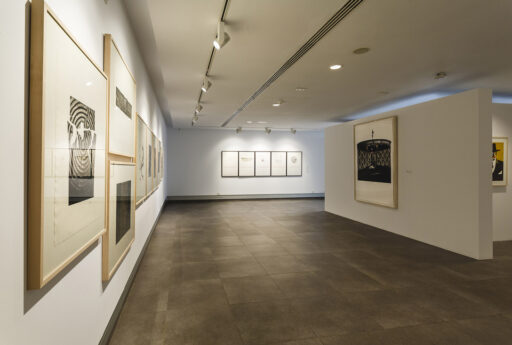
Rafael Botí Art Center
The Rafael Botí Art Center is an exhibition space and a place for creation, reflection, dissemination and debate around contemporary artistic manifestations, vertebrates around the plastic and visual arts. Located in the Jewish quarter of Córdoba, it has two large rooms for temporary exhibitions, a room dedicated to the permanent exhibition of the work of Rafael Botí and various multipurpose spaces such as the patio and terrace.
Direction: Manríquez Street, 5, 14003, Córdoba
Phone: 957 49 65 20
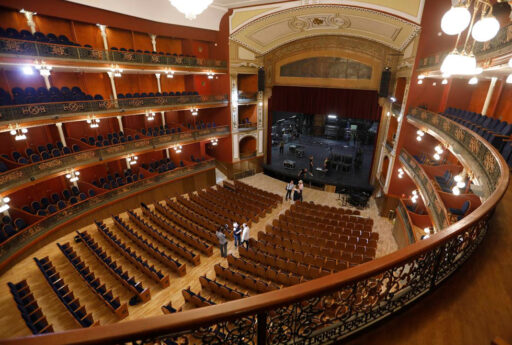
Great theater
Work of the architect Amadeo Rodríguez, was inaugurated on 13 April 1873 with the staging of the zarzuela Marta. Until 1970, year it was closed, it underwent various renovations that did not affect its initial structure. Upon request for demolition by its owners, The Municipal Institute of Performing Arts took over the place (lower) in 1982, after declaring the building a Historic Artistic Property. They reopened their doors in 1986.
Direction: Boulevard of the Great Captain, Córdoba
Schedule
Phone: 689 27 44 25

Church of Santo Domingo de Silos
This church is popularly called "de la Compañía", since it was built by the Jesuits together with the entire annexed building of the Colegio de Santa Catalina. This immense church is shaped like a Latin cross with a spherical dome and lantern, and it was made by Hernán Ruiz II, finishing the works in the year 1.589.
Direction: Company square, 14002, Córdoba